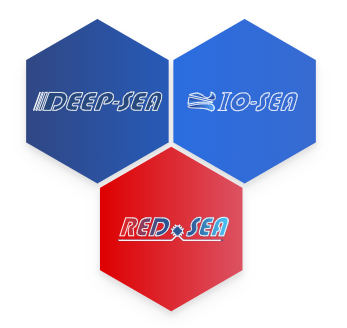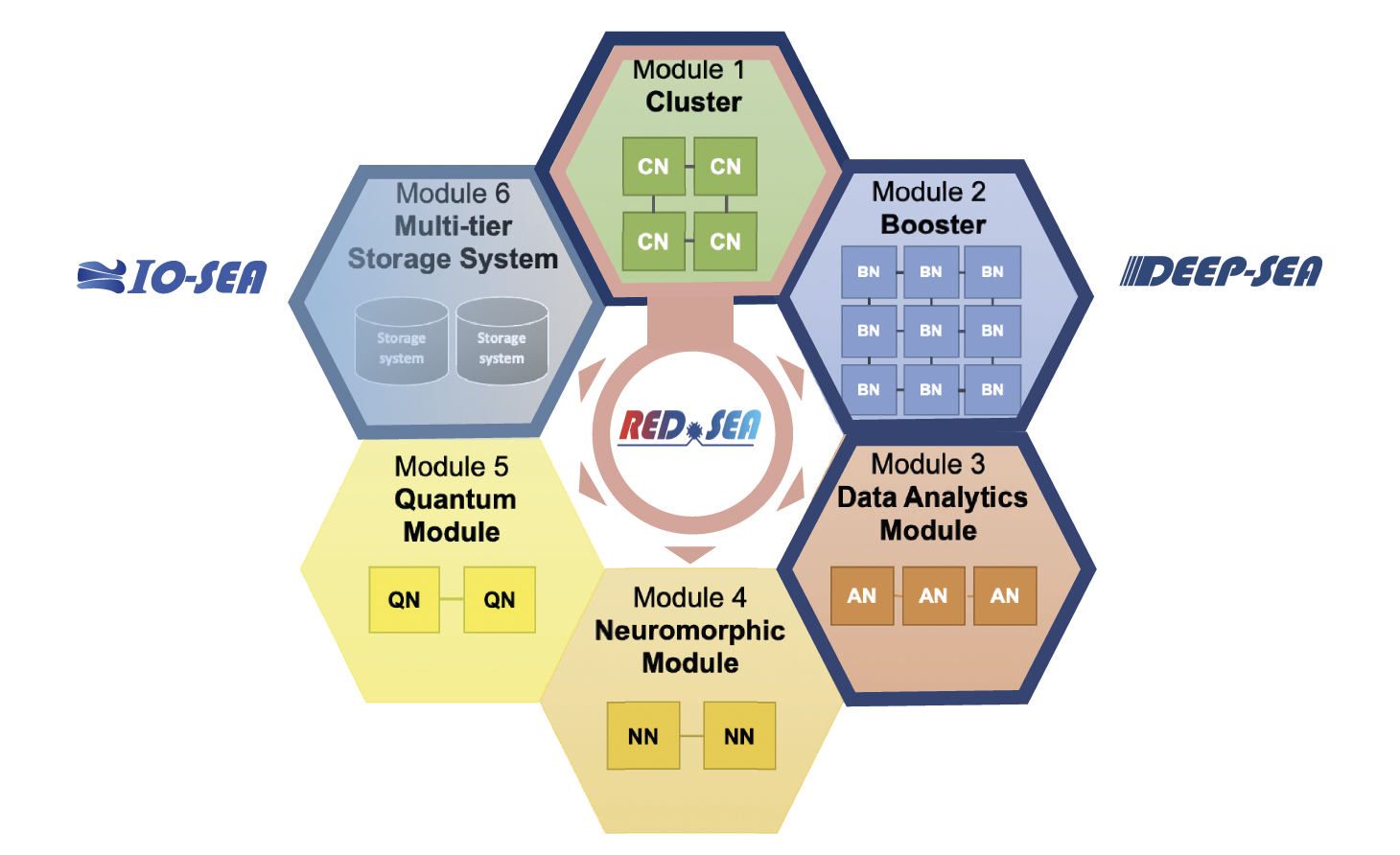DEEP-SEA aims to improve the manageability and programmability of highly heterogeneous system architectures. DEEP-SEA is the natural continuation of the DEEP project series. It aims for easier programming of the Modular Supercomputer Architecture initiated by the DEEP-EST project – a concept that is already implemented in the JUWELS HPC system at the Forschungszentrum Jülich and in the EuroHPC MeluXina system in Luxembourg.
DEEP-SEA, RED-SEA and IO-SEA
The SEA projects DEEP-SEA, RED-SEA and IO-SEA realise the shared vision of the Jülich Supercomputing Centre (JSC), the French Alternative Energies and Atomic Energy Commission (CEA), Atos and ParTec for a Modular Supercomputer Architecture. The four core partners have brought together the best European academic and industrial expertise to strengthen the European technologies that will equip future European Exascale computers.
The three projects build on the results of previous and ongoing European projects. In particular, they coordinate their efforts with hardware-focused projects such as the European Processor Initiative, with the aim of contributing to a complete and sustainable European High Performance Computing (HPC) ecosystem for the Exascale architecture.
The SEA projects have been working together since the early stages of preparation to align the scope of their proposals with the EuroHPC JU, ensuring complementarity and avoiding overlap. All three projects have been accepted by the EuroHPC JU and started on 1 April 2021 for a duration of three years each.

The Modular Supercomputing Architecture
The Modular Supercomputing Architecture (MSA) is a blueprint for heterogeneous Exascale systems with highest efficiency and scalability. It integrates distinct compute modules with specific performance characteristics. Different workload components run on the best-suited module, improving time to solution and energy efficiency.

Programming Environment for European Exascale Systems
DEEP-SEA
Network Interconnect for Exascale Systems
RED-SEA
RED-SEA looks into the network interconnect – a potential bottleneck at the Exascale. It aims to extend and optimise the production-proven European interconnect BXI (BullSequana eXascale Interconnect) to make it capable of powering future European Exascale systems. As HPC systems increasingly need to interact securely with the outside world, including public clouds, edge servers or third-party HPC systems, RED-SEA also adds a seamless interface with Ethernet. The project relies on technology developed within previous projects such as ExaNest and Mont-Blanc.
Storage I/O and Data Management for Exascale Architectures
IO-SEA
IO-SEA covers the Input/Output and data management aspects that will help tackle the increased pressure on storage systems in the context of Exascale systems. It aims to design and develop a novel management and storage platform based on object stores, allowing for hierarchical storage management (HSM) and on-demand provisioning of storage services. It leverages the results from the Sage, Sage 2 and Maestro projects.
